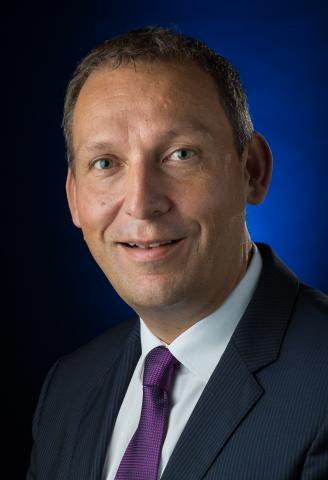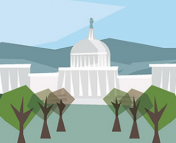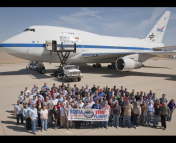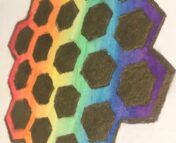
Dr. Thomas Zurbuchen recently retired as Associate Administrator for NASA’s Science Mission Directorate (SMD). From 2016 to 2022, he oversaw NASA’s scientific research divisions and coordinated with government and industry partners to keep NASA at the forefront of astrophysics, Earth and space science, heliophysics, and more. Astrobites’s Science Policy Committee sat down with Dr. Zurbuchen for a retrospective on his tenure as SMD Associate Administrator and his thoughts on the current state of NASA Science.
This interview has been edited for length and clarity.
AB: What have you learned during your tenure about working with Congress to make sure NASA funding requirements (especially SMD) get met? Are there things the broader science community should know about this?
TZ: Funding, and Congress, and by all stakeholders, including whatever White House we’re in, relates to a number of ingredients. The first one is a strong strategy that actually can help us get support for the programs. And the second one is trust, that the money that we’re getting allocated is implemented in a way that makes the taxpayers proud. Needless to say, the challenges that we had with JWST undermined the trust for many of our stakeholders. We’re extremely happy and proud of the team for their success at the end here, and amazing performance in the last five years. If we want to have support for the ambitious Decadal [Survey recommendations], we need to focus on trust as a major ingredient. From the science perspective, that means that we don’t go polish all the science and ask for every single iota of science, but actually make an acceptable and successful strategy for the engineering teams to implement. For example, at the 90th percentile, if all the work [of a large, segmented-mirror space telescope] can be done with a warm mirror, and you try to drive it towards a cold mirror, all of a sudden you just added billions of dollars and many years [to the project]. And I think what the science community needs to understand and appreciate are those things.
AB: Do you see a path towards expanding NASA’s research funding efforts? At AAS 240 (Summer 2022), you mentioned expanding the pool of NASA and broader astrophysics research talent as a major goal. The NSF has had some high-profile funding increases from Congress, could any of NASA’s programs like FINESST (Future Investigators in NASA Earth and Space Science and Technology) see similar increases in the future?
TZ: We’ve been actively pushing on this, and in many of the [NASA Science research] areas we’re paying a large majority of the grad students in the United States. That includes Astrophysics, Heliophysics, and Planetary Sciences, well over 50%, in many cases over 80%, of the grad students in the United States are covered by NASA. It has been tough for me to recognize that many of our stakeholders, on Capitol Hill or elsewhere, have not included NASA in the kind of innovation injection [of funding] of the type that the NSF got. One of the things that I hope we can make progress on as a community is to communicate to our stakeholders that NASA is a prime innovation agency and education focused agency, similar to the NSF, or the Department of Energy, or NIH. So far, what we’re trying to do is very hard using the funding that is allocated, and we are making progress in all these dimensions. But the reason for the lack of increase for these kinds of investments at NASA is a higher pay grade than where I’m sitting.
AB: Lots of astronomers and space scientists are concerned about the potential for large satellite constellations to affect ground- and space-based observing (as well as increased risk to space assets in Low Earth Orbit (LEO)). How could NASA SMD take the opportunity to lead on ensuring these activities are sustainable and don’t disrupt existing or future space science work?
TZ: LEO is an important place for us to do science, especially looking at our planet, but also beyond that. It’s where we want to continue to do work, and do so safely. I already mentioned that we’re not a regulatory agency. But what we do, though, is provide information and do our best where we can. We have data that helped quantify some of the environmental challenges. Needless to say, other agencies do a more thorough job, because that’s what their job is. We’re, in fact, very much working with these agencies.
The second part is that environmental constraints are important for orbital debris, but also lifetimes of systems especially as it comes to the edge of the upper atmosphere which is changing rapidly because of solar activity. We are actively looking at developing a mission [the Geospace Dynamics Constellation] in Heliophysics to make sure we understand the outer edge of our atmosphere. That’s where both the LEO and the orbital debris sphere interact with nature. I think the other piece where we’re spending a lot of time on is the micrometeorite environment and LEO. It’s actually very much not well understood. Part of that is natural in source, a hundred tons or so per day of natural planetary debris hitting the atmosphere. Of course, a lot of this is human made, and so for us, looking at the low scale part very much falls in the realm of what we’re doing. The mission is called GDC, Geospace Dynamics Constellation, really understanding the outer edge of the atmosphere, which is so important. So we’re going to continue to do that and provide input to regulatory agencies, and it’s in our interest to find a solution for that. We’re less worried about our domestic partners. We know how to work with them, they’ve been very responsive to inputs. We’re more worried about this becoming an international issue. Many of the international players, we believe we have far less insight and input on, and we need to address it as an international community.
AB: Can you talk a little bit about any unmet goals you had? Things that you wanted to achieve during your tenure, but weren’t able to?
TZ: Let me interpret your question in a slightly different way: “If you were here another five years, what are the things you would do that you didn’t get to?” Are you okay with that interpretation?
AB: Yeah, that’s actually much better! (Laughs)
TZ: My hope is, (and we’ll see what the Heliophysics Decadal talks about) I think we should really start focusing on beating Voyager by a factor of 10. Really learning how to go into deep space with new propulsion systems, and new technologies to really learn about interstellar material, but also learning how to make progress towards going to the next star. And it’s just one of those things, yes, it’s mind blowing, that we should be focusing on.
I really believe that if I stayed here longer, [we should be] taking advantage of standardized [spacecraft] buses to be more rapidly able to make measurements from space. Broadening the participation pool, because now we don’t need to build spacecraft at some university, we can have a group of people, perhaps together with industry, that can build instruments that we can put into space, and they can look at the Earth in a new way, or look at the universe in a new way. That more rapid, more open platform is just, I think, just an incredible opportunity ahead of us, and we have only scratched the surface.
I think in terms of the next five years, I really would like to figure out ways of developing the next big observatories, to look at our universe in ways that truly take advantage of the paradigm altering technologies. For example, large launch [capability], which is just at the point of emergence. Also the re-emergence of robotic servicing, that is already affecting a number of industries, but I think can affect us also, in a positive fashion.
The final point is really about Earth science. I believe, with the speed of change on Earth, both in climate and threats that we have, instrumenting our planet from space and providing that data with urgency to the benefit of users, citizens, affected communities everywhere, is one of the most amazingly exciting goals. And [it’s] something that has a lot of potential for improvement. Sometimes, from the moment of observation until we have it published, may take single digit years. You know, three, four years, until that observation is actually useful to people on the ground, and often has taken us a decade. That is way too long! Way, way too long! So the question is, how do we really change our research, but also our application paradigms (Earth science as well), that enables action? “Earth action”, that’s what we should be doing from space. I just think it’s a big idea, one that surely will involve commercial partners, but will involve thinkers that are currently in grad school, and perhaps not even [yet in grad school]! Because we need to think in a new way about our own planet because of the urgency that it demands.
AB: Thank you so much for your time!
TZ: Thanks for your interest.
Astrobite Edited by Sarah Bodansky and Graham Doskoch
Featured Image Credit: NASA/Bill Ingalls




